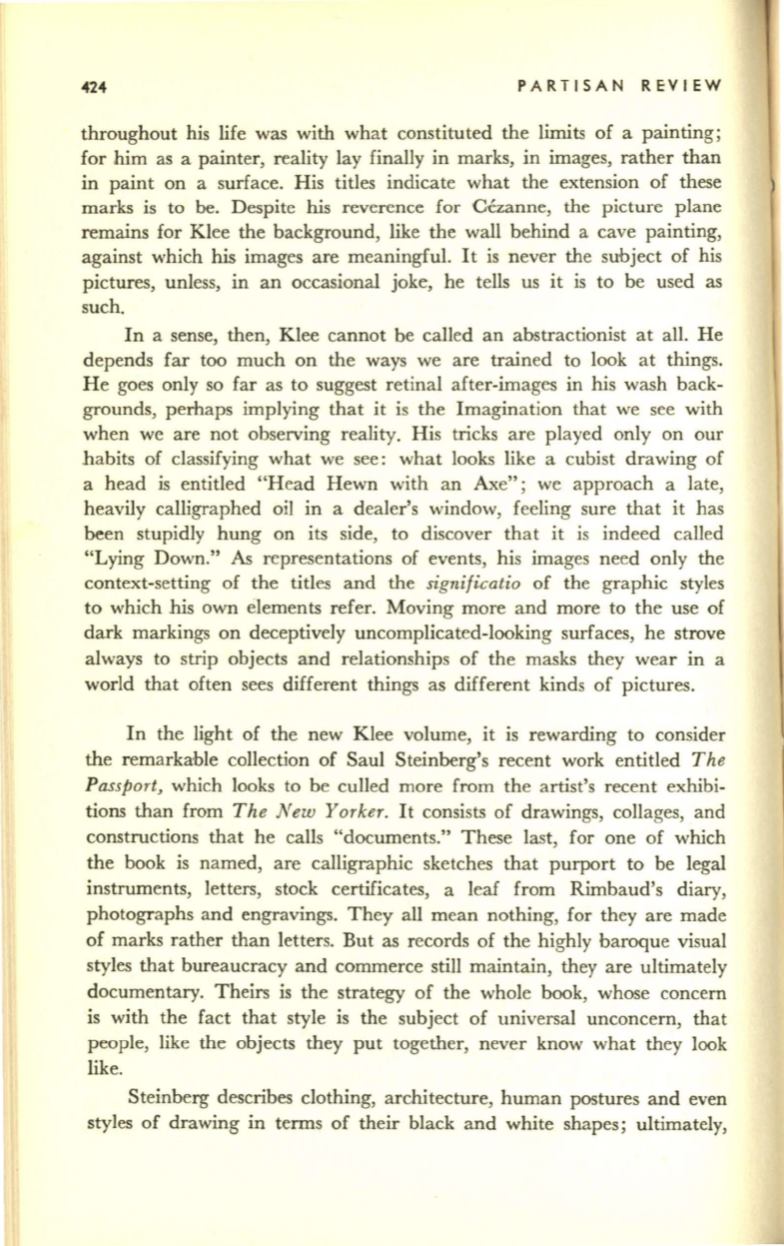
4'24
PARTISAN REVIEW
throughout his life was with what constituted the limits of a painting;
for him as a painter, reality lay finally in marks, in images, rather than
in paint on a surface. His titles indicate what the extension of these
marks is to be. Despite his reverence for Cezanne, the picture plane
remains for Klee the background, like the wall behind a cave painting,
against which his images are meaningful.
It
is never the subject of his
pictures, unless, in an occasional joke, he tells us it is to be used as
such.
In a sense, then, Klee cannot be called an abstractionist at all. He
depends far too much on the ways we are trained to look at things.
He goes only so far as to suggest retinal after-images in his wash back–
grounds, perhaps implying that it is the Imagination that we see with
when we are not observing reality. His tricks are played only on our
habits of classifying what we see: what looks like a cubist drawing of
a head is entitled "Head Hewn with an Axe" ; we approach a late,
heavily calligraphed oil in a dealer's window, feeling sure that it has
been stupidly hung on its side, to discover that it is indeed called
"Lying Down." As representations of events, his images need only the
context-setting of the titles and the
signifi.catio
of the graphic styles
to which his own elements refer. Moving more and more to the use of
dark markings on deceptively uncomplicated-looking surfaces, he strove
always to strip objects and relationships of the masks they wear in a
world that often sees different things as different kinds of pictures.
In the light of the new Klee volume, it is rewarding to consider
the remarkahle collection of Saul Steinberg's recent work entitled
The
Passport,
which looks to be culled more from the artist's recent exhibi–
tions than from
The New Yorker.
It consists of drawings, collages, and
constructions that he calls "documents." These last, for one of which
the book is named, are calligraphic sketches that purport to be legal
instruments, letters, stock certificates, a leaf from Rimbaud's diary,
photographs and engravings. They all mean nothing, for they are made
of marks rather than letters. But as records of the highly baroque visual
styles that bureaucracy and commerce still maintain, they are ultimately
documentary. Theirs is the strategy of the whole book, whose concern
is with the fact that style is the subject of universal unconcern, that
people, like the objects they put together, never know what they look
like.
Steinberg describes clothing, architecture, human postures and even
styles of drawing in terms of their black and white shapes; ultimately,


